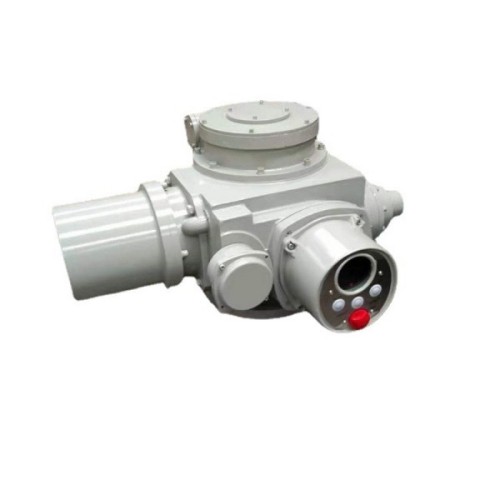Stainless Steel Slip-On Flanges for Reliable Connections and Easy Installation
Understanding Slip-On Flange in Stainless Steel Applications
The engineering and construction industries heavily rely on various types of flanges to ensure secure and reliable piping systems. One common type of flange that stands out is the slip-on flange, particularly in stainless steel applications. This article delves into the characteristics, advantages, applications, and considerations when working with stainless steel slip-on flanges.
What is a Slip-On Flange?
A slip-on flange is a type of flange that is designed to slip over the end of a pipe. It is typically welded both on the inside and outside to provide robust structural integrity. The flange's design allows for easy alignment during installation, which is essential in maintaining the piping system’s overall integrity. Slip-on flanges are classified under different standards, including ANSI, ASME, and API, which dictate their dimensions and pressure ratings.
Characteristics of Stainless Steel Slip-On Flanges
Stainless steel slip-on flanges come in various grades, such as 304, 316, and 310. These grades have specific properties that make them suitable for different environmental conditions.
1. Corrosion Resistance Stainless steel is known for its ability to resist corrosion, making it an ideal choice for applications involving water, chemicals, and various industrial environments.
2. Strength and Durability The mechanical properties of stainless steel provide high strength and durability, allowing the flanges to handle high pressure and temperature variations.
3. Versatility Slip-on flanges can be used in an array of industries, including oil and gas, chemical processing, water supply, and wastewater treatment.
4. Ease of Installation One of the standout features of slip-on flanges is their ease of installation. They can be easily aligned with the pipe and welded, streamlining the installation process in comparison to other flange types.
Advantages of Slip-On Flanges
1. Cost-Effectiveness Compared to other types of flanges such as weld neck flanges, slip-on flanges are less expensive. This aspect makes them a popular choice for large-scale projects where cost efficiency is a priority.
2. Ease of Use The design of a slip-on flange allows for easy handling and alignment during installation. This feature can significantly reduce the time required for assembly.
3. Adaptability Due to their design, stainless steel slip-on flanges can easily be modified or adapted for various piping systems, making them suitable across different sectors.
slip on flange stainless steel

Applications
Slip-on flanges are utilized in various applications across multiple industries. Here are some typical uses
1. Piping Systems They are prevalent in both high-pressure and low-pressure piping systems, where a reliable connection is crucial.
2. Chemical Plants Given their corrosion resistance, stainless steel slip-on flanges are commonly found in chemical processing facilities, where they endure exposure to harsh chemicals.
3. Water Treatment Facilities The use of slip-on flanges in water treatment systems ensures integrity and reliability in the piping systems used for water transport and treatment processes.
4. Oil and Gas In the oil and gas sector, they are often used for connecting pipelines and equipment, offering a secure solution under varying operational pressures.
Considerations When Using Slip-On Flanges
While slip-on flanges have many advantages, several considerations should be noted
1. Alignment Although they offer ease during the installation process, careful alignment is critical to avoid stress points that could lead to failure.
2. Welding Considerations The quality of the welds is vital. Poor welding techniques can lead to leaks or even failure of the flange connection.
3. Pressure Ratings It is essential to choose the right pressure rating for the application, as insufficient ratings can lead to catastrophic failures.
4. Corrosion Considerations While stainless steel is corrosion-resistant, selecting the proper grade for specific environments (e.g., high chloride exposure) ensures longevity and durability.
Conclusion
In summary, stainless steel slip-on flanges play a crucial role in various industrial applications due to their benefits of cost-effectiveness, ease of installation, and robustness. Understanding their characteristics, advantages, and applications helps engineers and technicians make informed decisions for piping systems, ensuring reliability and efficiency in operations. As the demand for durable and efficient piping solutions continues to grow, the importance of slip-on flanges in stainless steel applications remains significant.
-
The Key to Fluid Control: Exploring the Advantages of Ball Valves in Industrial SystemsNewsJul.09,2025
-
The Versatile World of 1, 2, and 3 Piece Ball ValvesNewsJul.09,2025
-
Stainless Steel Ball Valves: The Ideal Choice for Efficient Flow ControlNewsJul.09,2025
-
Optimizing Fluid Control with Ball Float ValvesNewsJul.09,2025
-
Manual Gate Valves: Essential for Control and EfficiencyNewsJul.09,2025
-
Everything You Need to Know About Butterfly ValvesNewsJul.09,2025
-
The Versatility of Wafer Type Butterfly ValvesNewsJul.08,2025




